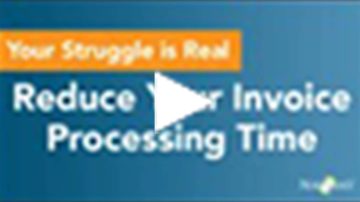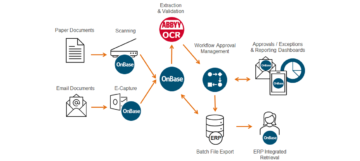The Advantages of Automation in Accounting
If your AP department is weighed down by your time-consuming, tedious, manual AP processing, you aren’t alone. Organizations across industries are feeling the stress and trading their manual AP processing methods for AP automation. According to IOFM, AP automation increased from 66% in 2019 to 73% in 2020, and it’s continued to rise steadily in 2021.
With AP Automation benefits like quick ROI, fraud protection, savings, scalability, and improved accuracy, it has a powerful impact on many levels of the organization. But to access the advantages of automation in accounting, you first need to get your decision-makers on board. And there’s no better way than to show them how this technology will directly impact them and the issues they care about most.
AP Automation’s Impact Across the Accounting Department
1. Clerks & Other Members of the AP Team
AP automation takes over repetitive manual AP tasks like:
- data entry
- printing checks
- looking up TINs individually
- managing physical documents
And it does so with 99.5% accuracy, virtually eliminating the painstaking task of identifying and fixing errors and double entries. As a result, clerks and other AP team members can focus on more value-added tasks like addressing exceptions, providing excellent customer service, and data analysis.
2. The AP Manager
AP automation simplifies and streamlines the payment approval process, making the AP manager’s life a lot easier. AP automation eases these processes with capabilities like interactive reporting dashboards and customizable workflow rules. This technology allows AP managers to approve payments in batches and increases visibility, which assists with control reports. Automation also allows AP managers to set up automatic alerts for issues like supplier disputes so they can be resolved immediately. In the extra time they unlock, AP managers can focus their attention on managing and developing their team and other valuable tasks.
3. The Controller
The modern controller is caught between two key responsibilities: the daily challenge of keeping invoice payments on schedule and the strategic focus on the business’s financial well-being. According to Deloitte, controllers spend 70% of their time facilitating monotonous tactical tasks like paying invoices, leaving little time for strategic work like proactive planning. AP automation’s impact can help controllers find a balance between these responsibilities.
AP automation completes invoice tasks to free up time for controllers. Personalized business rules automate the routing, matching, and circulation of invoices, which are configured to your company’s specific needs. This way, controllers can finally attend to more strategic activities, like:
- keeping tabs on new regulations
- proactively monitoring vendor relationships
- staying on top of the dynamic compliance landscape
- developing their team
- improve the business with new initiatives
- deliver key business insights
AP automation solutions also enhance controllers’ visibility into processes with interactive reporting dashboards. These interfaces allow controllers to easily search for and retrieve invoice and payment information while leveraging KPIs and analytics in real-time. Controllers can also use these new insights to inform strategic business decisions. Overall, AP automation’s impact gives controllers the much-needed peace of mind that they are in control of their organization’s financial health.

30-Minute Webinar: Manage Disruption Through Automated Accounts Payable
View this webinar to see how AP automation can transform your Accounts Payable operations, including a spotlight on some of this technology’s key features.
4. The CFO
Today’s CFO needs to ensure that the finance department is at peak performance. This challenge requires the CFO to closely monitor potential bottlenecks and find ways to reduce costs while increasing speed. As a result, having instant access to the most accurate, up-to-date data is critical. AP automation solutions provide clear visibility that helps drive smarter financial decision-making, reclaim time, and are scalable and business-ready.
CFOs can use the financial operations dashboards to compare real-time metrics, like days payable outstanding (DSO) and days payable outstanding (DPO), for a full view of the organization’s financial well-being. AP Automation also grants CFOs valuable insights into organizational cash flow. These visibility gains add up, allowing them to make informed decisions while shaping their business strategy.
5. The CEO
While the CEO may not be directly involved in AP matters every day, there are many advantages of automation in accounting that will grab their attention. For one, AP automation can lead to improved vendor relationships, which affects company reputation. This benefit stems from AP automation’s ability to accelerate payments to vendors as well as suppliers. AP automation also reduces fraud, audit, and compliance risk by eliminating errors and providing a thorough audit trail at a large scale.
CEOs will also appreciate the savings that come with faster overall processing. These cuts come from increased early-payment discount opportunities, as well as decreased invoice processing and labor costs. For example, it can cost between $8 – 10 on average to manually process an invoice, which AP automation can shrink down to just $2 per invoice. Finally, AP automation supports long-term growth, allowing companies to grow and scale without adding headcount, even as business volume increases.
If you’re ready to further explore the advantages of automation in accounting and learn what AP automation’s impact can look like for you, contact us to set up a consultation.
Want More Content Like This?
Subscribe to the Naviant Blog. Each Thursday, we’ll send you a recap of our latest info-packed blog so you can be among the first to access the latest trends and expert tips on workflow, intelligent automation, the cloud, and more.



